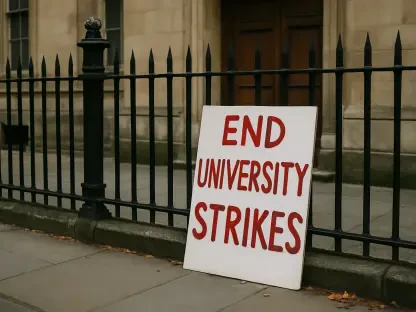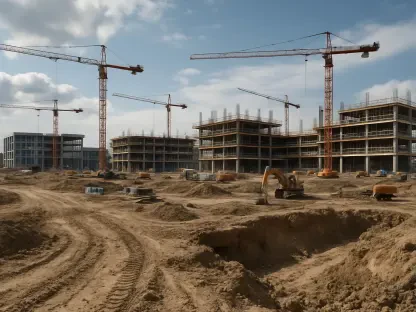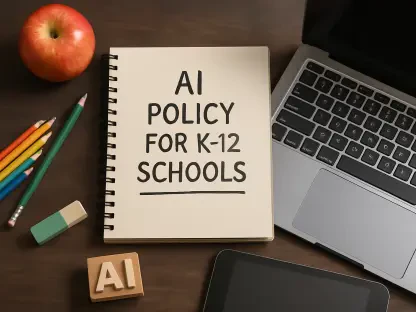In a move that has sent ripples through the educational community, Chicago Public Schools (CPS) recently announced the elimination of 480 janitor positions as part of a sweeping effort to address a staggering $734 million budget deficit, marking a significant shift in how the district manages its facilities. This decision, which also involves terminating all seven private custodial contracts impacting around 1,250 privately employed custodians, starts on September 30, when CPS will directly oversee 2,100 full-time custodians, aligning with a five-year strategic plan to bring a substantial portion of privatized roles under district control. The projected savings of $40 million from these cuts are a critical piece of a broader $165 million budget reduction that includes layoffs and cuts to school-based services. This bold financial strategy raises pressing questions about the balance between fiscal responsibility and maintaining safe, clean learning environments for students and staff across the city.
Budget Crisis Drives Drastic Measures
The financial challenges facing CPS have reached a critical juncture, necessitating tough choices to stabilize the district’s budget. With a deficit of over $700 million, the decision to cut 480 janitor positions and end private custodial contracts costing $222 million over two school years reflects a desperate need to reduce expenditures. District officials, including Chief Operating Officer Charles Mayfield, have framed this as a necessary step toward greater efficiency and sustainability. The $40 million in savings is seen as a lifeline amid broader cuts that also impact hot meal programs and health services in schools. While the numbers paint a grim picture of fiscal distress, the district insists that bringing custodial services in-house will ultimately lead to better resource allocation. However, the scale of these reductions, particularly so close to the start of the school year, has sparked intense debate about whether short-term savings might come at the expense of long-term operational stability and student well-being.
Beyond the immediate financial relief, the move to direct oversight of custodial services is positioned as a strategic pivot for CPS. The district aims to enhance accountability through improved training programs, stricter monitoring of supplies, and the introduction of a mobile app to track cleaning progress. According to officials, these innovations are designed to maintain cleanliness standards despite the reduced workforce. Yet, skepticism lingers about whether these measures can fully compensate for the loss of nearly 500 positions. Historical precedents, such as the problematic outsourcing to a private company in the past which led to widespread complaints about dirty schools, add weight to concerns that efficiency gains might be overshadowed by practical challenges. As CPS navigates this transition, the focus remains on whether these technological and procedural upgrades can deliver the promised results without compromising the quality of school environments.
Stakeholder Reactions Highlight Deep Divisions
The decision to slash janitorial staff has elicited a wide range of responses, revealing a deep divide among stakeholders. CPS officials maintain an optimistic stance, asserting that direct oversight will improve service quality and operational efficiency. They have also extended an opportunity for affected private custodians to apply for 750 in-house positions, though not all will secure roles due to budget constraints. This gesture, while intended to mitigate job losses, falls short of addressing the full scope of the cuts. The district’s emphasis on long-term benefits, such as streamlined operations and enhanced monitoring, contrasts sharply with the immediate concerns of those directly impacted. As schools prepare to reopen, the timing of the announcement—just weeks before the academic year—has intensified scrutiny over whether facilities will be ready to welcome students under these new constraints.
On the other side of the debate, unions representing custodial workers have voiced strong opposition to the scale and timing of the layoffs. Leaders from the Service Employees International Union (SEIU) Local 1 and Local 73 argue that eliminating over 1,200 custodial positions jeopardizes the safety and health of learning environments. They express frustration over the lack of a clear plan to maintain cleanliness with a significantly reduced staff. Union representatives, including President Genie Kastrup, have called for a reconsideration of the number of cuts and priority hiring for senior workers, alongside preserving pay and benefits for those transitioning to in-house roles. The urgency of their demands underscores a broader concern about the human cost of these budget-driven decisions. As tensions rise, the clash between fiscal imperatives and worker livelihoods remains a central point of contention, with no immediate resolution in sight.
Lessons from Past Outsourcing Failures
Reflecting on previous experiences with privatized custodial services offers critical context for understanding current concerns. Years ago, CPS outsourced janitorial work to a private firm, resulting in the layoff of hundreds of workers and widespread issues with school cleanliness. The arrangement not only failed to deliver promised savings but also exceeded budget projections by millions, drawing sharp criticism from unions and school leaders alike. When that contract was eventually terminated, it was met with relief, yet the echoes of those struggles linger in the present decision to cut staff. The historical misstep serves as a cautionary tale, fueling fears that the district might once again prioritize cost over quality. As CPS shifts to direct oversight, the challenge lies in avoiding a repeat of past mistakes while navigating a drastically reduced workforce.
Further compounding these worries is the perspective of school administrators who, while supportive of ending private contracts, remain apprehensive about managing with fewer custodians. A South Side principal highlighted the potential for scheduling disruptions and diminished cleaning capacity during this transition. This balanced viewpoint captures a broader sentiment that while the intent behind direct district control is commendable, the practical implications of fewer staff could strain school operations. The memory of past outsourcing failures amplifies the stakes, as stakeholders question whether CPS has adequately prepared for the immediate aftermath of these cuts. With the school year looming, the district faces intense pressure to demonstrate that history will not repeat itself, ensuring that fiscal adjustments do not undermine the fundamental need for clean and safe educational spaces.
Navigating the Path Forward
Looking back, the decision by CPS to eliminate 480 janitor positions and end private custodial contracts stirred a complex mix of fiscal necessity and operational risk. The $40 million in savings was a critical step toward addressing a massive budget deficit, yet it came with significant trade-offs that left unions and school leaders wary of the impact on cleanliness and safety. As the district moved to implement direct oversight, promises of enhanced training and technology aimed to offset the reduced staff, but doubts persisted about their effectiveness in the short term. The historical backdrop of failed outsourcing efforts only deepened the skepticism among stakeholders. Moving forward, CPS must prioritize transparent communication with unions to address job security concerns and develop contingency plans to maintain facility standards. Exploring partnerships for temporary staffing or reallocating resources during peak times could help bridge gaps. Ultimately, the district’s ability to adapt and respond to emerging challenges will determine whether this bold strategy achieves its intended balance of cost-saving and quality service.









